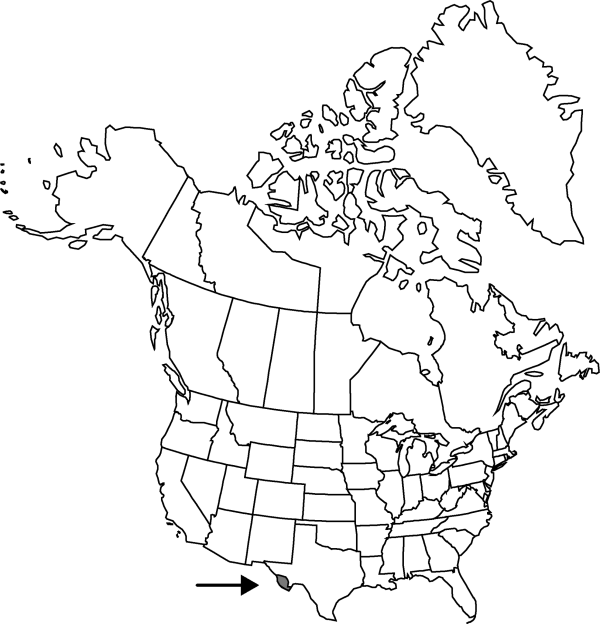Difference between revisions of "Tidestromia carnosa"
J. Arnold Arbor. 24: 232. 1943.
FNA>Volume Importer |
imported>Volume Importer |
||
| (5 intermediate revisions by 2 users not shown) | |||
| Line 7: | Line 7: | ||
|year=1943 | |year=1943 | ||
}} | }} | ||
| − | |basionyms={{Treatment/ID/ | + | |special_status={{Treatment/ID/Special_status |
| + | |code=C | ||
| + | |label=Conservation concern | ||
| + | }} | ||
| + | |basionyms={{Treatment/ID/Basionym | ||
|name=Cladothrix lanuginosa var. carnosa | |name=Cladothrix lanuginosa var. carnosa | ||
|authority=Steyermark | |authority=Steyermark | ||
| + | |rank=variety | ||
| + | |publication_title=Ann. Missouri Bot. Gard. | ||
| + | |publication_place=19: 389. 1932 | ||
}} | }} | ||
|synonyms={{Treatment/ID/Synonym | |synonyms={{Treatment/ID/Synonym | ||
|name=Tidestromia lanuginosa var. carnosa | |name=Tidestromia lanuginosa var. carnosa | ||
|authority=(Steyermark) Cory | |authority=(Steyermark) Cory | ||
| + | |rank=variety | ||
}} | }} | ||
|hierarchy=Amaranthaceae;Tidestromia;Tidestromia carnosa | |hierarchy=Amaranthaceae;Tidestromia;Tidestromia carnosa | ||
| Line 39: | Line 47: | ||
-->{{#Taxon: | -->{{#Taxon: | ||
name=Tidestromia carnosa | name=Tidestromia carnosa | ||
| − | |||
|authority=(Steyermark) I. M. Johnston | |authority=(Steyermark) I. M. Johnston | ||
|rank=species | |rank=species | ||
| Line 53: | Line 60: | ||
|publication title=J. Arnold Arbor. | |publication title=J. Arnold Arbor. | ||
|publication year=1943 | |publication year=1943 | ||
| − | |special status= | + | |special status=Conservation concern |
| − | |source xml=https:// | + | |source xml=https://bitbucket.org/aafc-mbb/fna-data-curation/src/2e0870ddd59836b60bcf96646a41e87ea5a5943a/coarse_grained_fna_xml/V4/V4_870.xml |
|genus=Tidestromia | |genus=Tidestromia | ||
|species=Tidestromia carnosa | |species=Tidestromia carnosa | ||
Latest revision as of 22:01, 5 November 2020
Herbs, annual, yellowish green, to 22 cm, glabrous or lanuginose; trichomes all candelabriform. Stems ascending or decumbent, herbaceous; buds absent on stem bases. Leaves: petiole to 1.5 cm; blade yellowish green, widely obovate, trullate, or lanceolate, 0.7–2.4 × 0.6–2.1 cm, fleshy, membranous when dry, base attenuate or oblique, glabrous or nearly so. Inflorescences 2–3-flowered; involucral leaf petiole to 0.4 cm, blade ovate, very widely ovate, narrowly elliptic, widely depressed-ovate, or obovate, 0.2–2.5 × 0.2–1.4 cm, fleshy, base attenuate or oblique, apex acute to obtuse; involucres on secondary branches formed by connation of involucral leaf bases, which become indurate and sometimes adnate with leaf bases; bracts widely ovate, 0.8–1 × 0.3–0.6 mm, apex acute or obtuse, distinctly lanuginose or glabrous; bracteoles 0.7–2 × 0.5–0.7 mm, apex acute, distinctly lanuginose or glabrous. Flowers 2–4 mm; tepals yellowish, 2–3.5 × 0.8–1.7 mm, distinctly lanuginose; staminal cup 0.5–0.6 mm; filaments 0.3–0.7 mm; anthers 0.4–0.6 mm; pseudostaminodes on short tissue lobes or absent; ovary 0.6–0.7 × 0.7–0.8 mm; style absent; stigmas 0.1–0.3 mm. Utricles 1.3–1.6 × 0.9–1.2 mm. Seeds white or brown-red, 1.5–1.8 × 1.4–1.7 mm.
Phenology: Flowering spring–fall.
Habitat: Dry rocky plains, roadsides, in limestone-sandy soils
Elevation: 700-900 m
Distribution

Tex., Mexico (Chihuahua).
Discussion
Of conservation concern.
Tidestromia carnosa was accepted as a variety by C. F. Reed (1970) and K. R. Robertson (1981). We follow I. M. Johnston in recognizing it as a species. Tidestromia carnosa is distinctive in being glabrous or nearly so, having fleshy stems, yellowish green true and involucral leaves (particularly apparent in the field but membranous on dry material), and involucres formed by the connation of involucral leaf bases, which become indurate and adnate with or without the true leaf base.
Selected References
None.